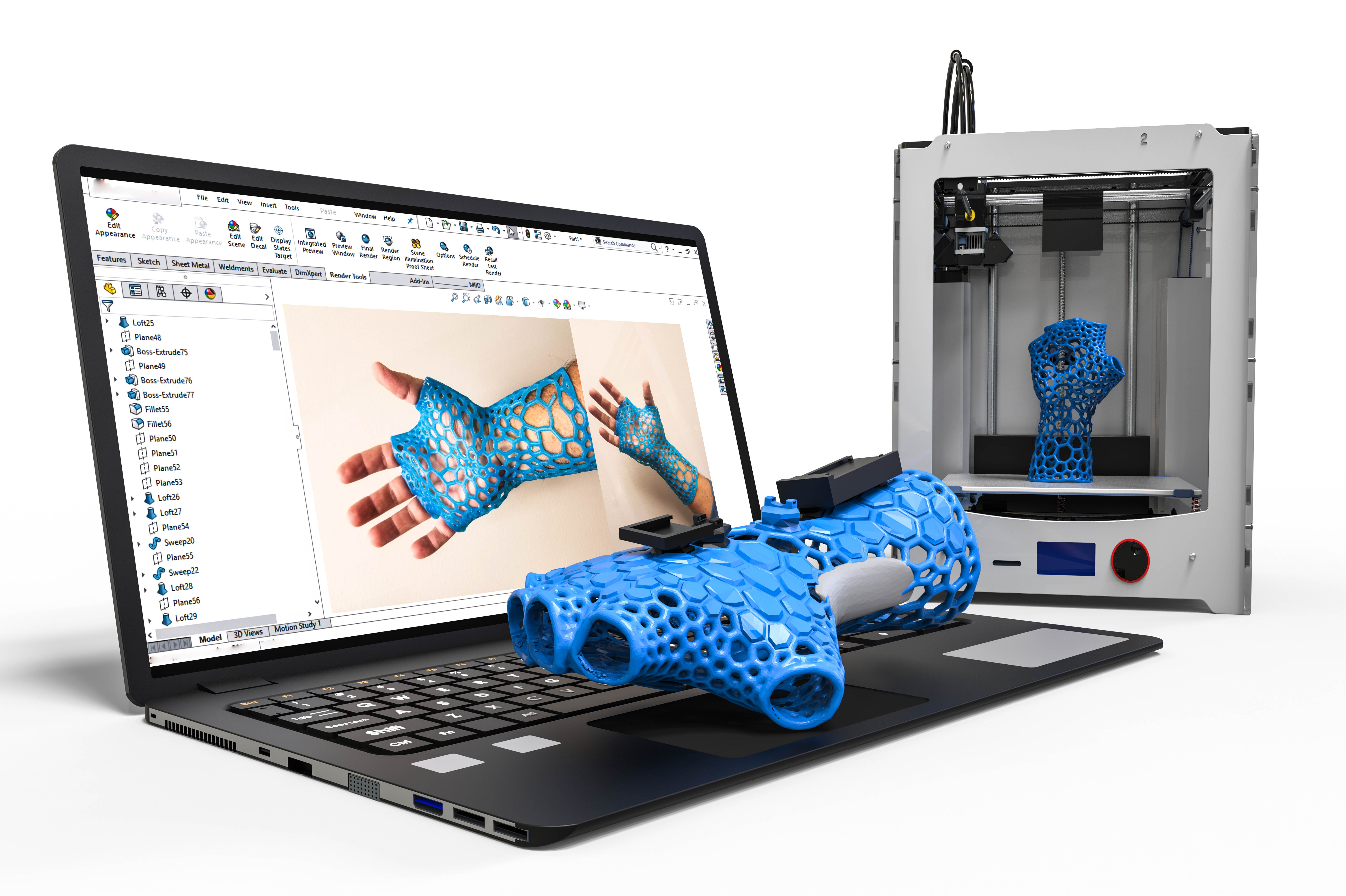With 3D printing to spare parts
3D printing is very interesting for prototype construction and small series. But there are also many use cases, where special spare parts are manufactured additively. Be it to get a higher stability, to save costs or simply because the spare part is no longer available otherwise. Prerequisites for the reproduction of the componentTo produce the desired spare part a 3D printer needs a 3D file as a template. If the defective component is available but no drawings or even data, it is possible to obtain these print files through a 3D scan. The disadvantage of this method for the customer, however, is that additional costs are incurred, which are of course not incurred if CAD files of the component are available. If at least one technical drawing is available, it is possible to generate printable 3D files with relatively little effort. The costs incurred depend on the desired or required material. So you can assume that 3D printing spare parts made of metal are much more expensive than those made of plastic.
Application examples of 3D printed spare partsThe reasons are manifold. And especially private customers can tell you how difficult it can be to get a defective spare part for a device that is no longer manufactured in this way. It is precisely this problem that 3D printing can help to solve in many cases.
Showerheads & household parts that are no longer manufactured 3D printingAn often underestimated but common example of spare parts from the 3D printer are showerheads. Once they are defective, they cannot be easily replaced if they are no longer produced in series. Some suppliers have therefore developed their own business model from 3D printing of shower heads and similar spare parts in the household sector for private customers.
3D printing of oldtimer spare parts at low cost and in original conditionProud owners of older, but well maintained cars also know all too well about the problems of obtaining spare parts for these oldtimer cars. There are supplier companies that are specially equipped to meet the needs of these customers. But at the latest when it comes to fairing parts, radiator figures, carburettor parts (such as float housings) or even entire intake manifolds, stocks can quickly become scarce. 3D printing offers the ideal remedy here.

Reproducing or repairing antique sculptures with 3D printingAn entirely different example of using 3D printing technology to obtain spare parts is the possibility of repairing antique sculptures. It is obvious that the necessary 3D files have to be obtained by scanning the object in question. At the same time, the 3D scan of an antique work of art also means a possibility of a gentle, since contactless reproduction of the work. There are even already service providers who have specialized in 3D print reproduction of antique works of art.
Spare parts for rail vehiclesAn interesting example from Switzerland is described by Siemens in its magazine Panorama. Since railway operators often have their rolling stock in use for more than 30 years, minor repairs are often necessary, which is why Siemens experts often produce spare parts for rail vehicles for a railway operator. Compared to spare parts made from casting molds or milled from metal blocks, 3D printing is fast and inexpensive. An additional plus: based on many years of operating experience, individual components can often be technically improved.
Have we aroused your interest? Click here for the online shop!

